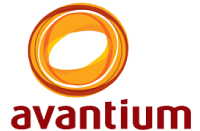Selective hydrogenation of acetylene
Selective acetylene hydrogenation units plays a fundamental role in the purification of polymer-grade ethylene produced in steam cracker plants and with the increased interest we recently see we expanded our internal capabilities to accelerate the research for selective hydrogenation catalysts .
Front-end vs Tail-End
Hydrogenation units exist in multiple variants depending on the location of the acetylene hydrogenation reactor(s). The two main designation are typically known as Front-end and Tail-end (or Back-end) [1].
Independently of the locations of the hydrogenation units, they have one thing in common:
Acetylene must be selectively hydrogenated but Why?
A study for a 800 kTA plant showed that “a differential in catalyst selectivity of 75 percent over its lifetime will result in an additional 48 million pounds per year (21.8 KTA) of ethylene—or over 2.7 percent of the plant’s ethylene capacity” [2], hence the value of accurately assessing the performance of acetylene hydrogenation catalysts before change outs.
Our approach for accelerating catalyst research
Avantium has recently built a dedicated high-throughput unit to evaluate the performance of acetylene hydrogenation catalysts. For this purpose, we use our Flowrence® technology and single-pellet-string reactors (SPSRs), optimized for the operation window as shown on the picture.
The unit consists of 16 reactors in parallel and multiple operation modes that allows us to simultaneously test 4, 8, 12 or 16 catalysts. In addition, the analysis of the product stream is carried out in a tailored two-channel GC; each containing one TCD and one FID. The GC works with a fast 6-minute method which accurately can analyze C1-C4 hydrocarbons, H2, He and N2.
Currently, we are performing a validation program with a catalyst supplier to optimize the experimental setup and establish the performance of the unit before its release for commercial catalyst testing.
This will enable our customers to determine the catalysts’ operating window and perform stability studies at iso-conversion tests with feedback control loops for reactor temperature control.
In short if you face a challenge on accelerating your selective hydrogenation catalyst development we have a testing solution available to help you.

[1] Edgar L. Mohundro. Overview on C2 and C3 selective hydrogenation in ethylene plants. In 15th Ethylene Produces Conference, volume 15. AIChE, 2003. Session 64: Ethylene Plant Technology C2 and C3 Hydrogenation Technology Review.
[2] Darin Tiedtke, T.T. Cheung, Jacques Leger, Stan Zisman, J.J. Bergmeister, and G.A. Delzer. Chemicals influencing the activity of palladium-based catalysts for the selective hydrogenation of acetylene to ethylene in acetylene converters. In 13th Ethylene Producers’ Conference, volume 13. AIChE, 2001. Session 80: Catalyst Poisons in Ethylene Plants.
